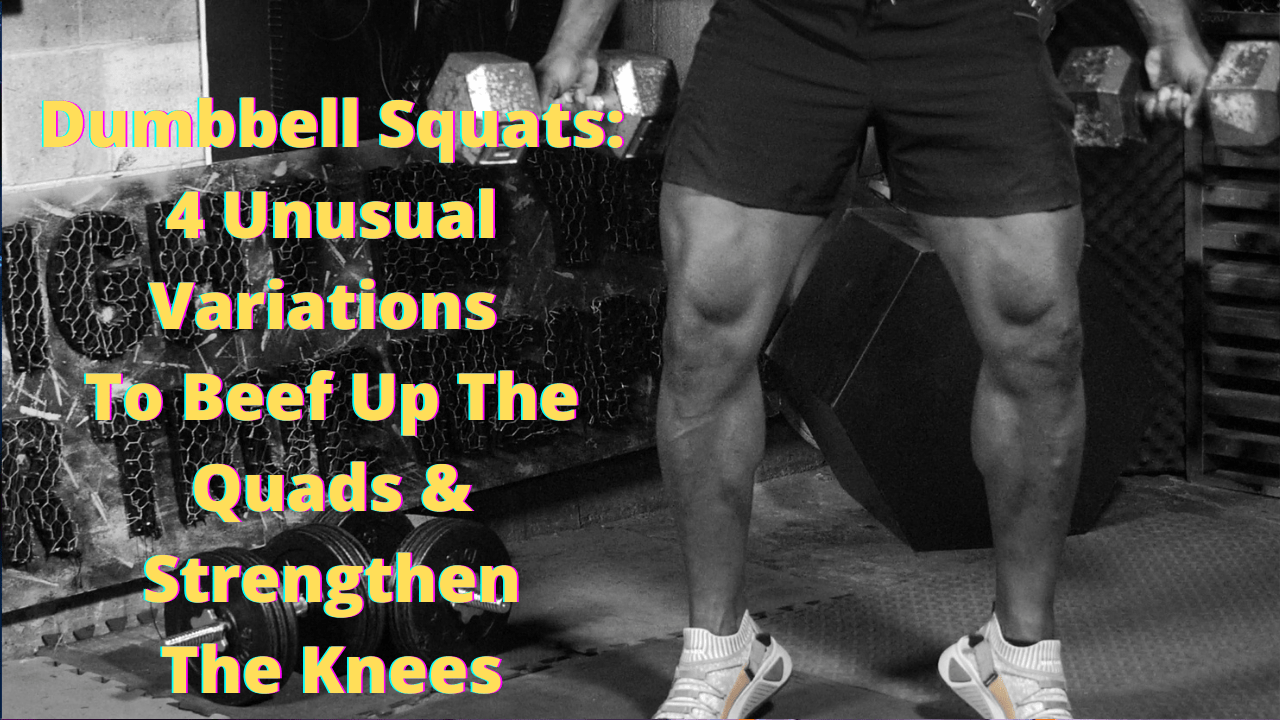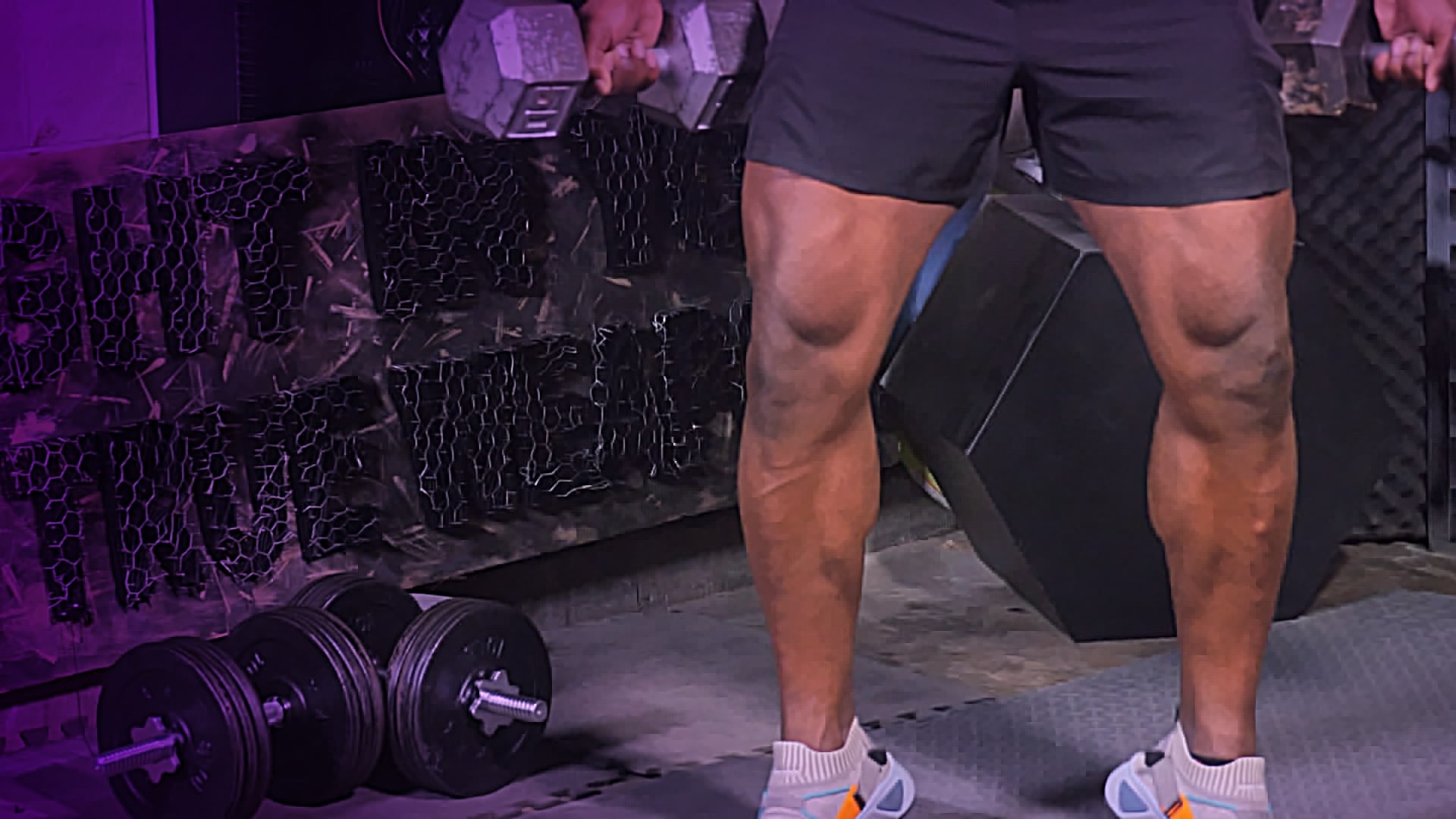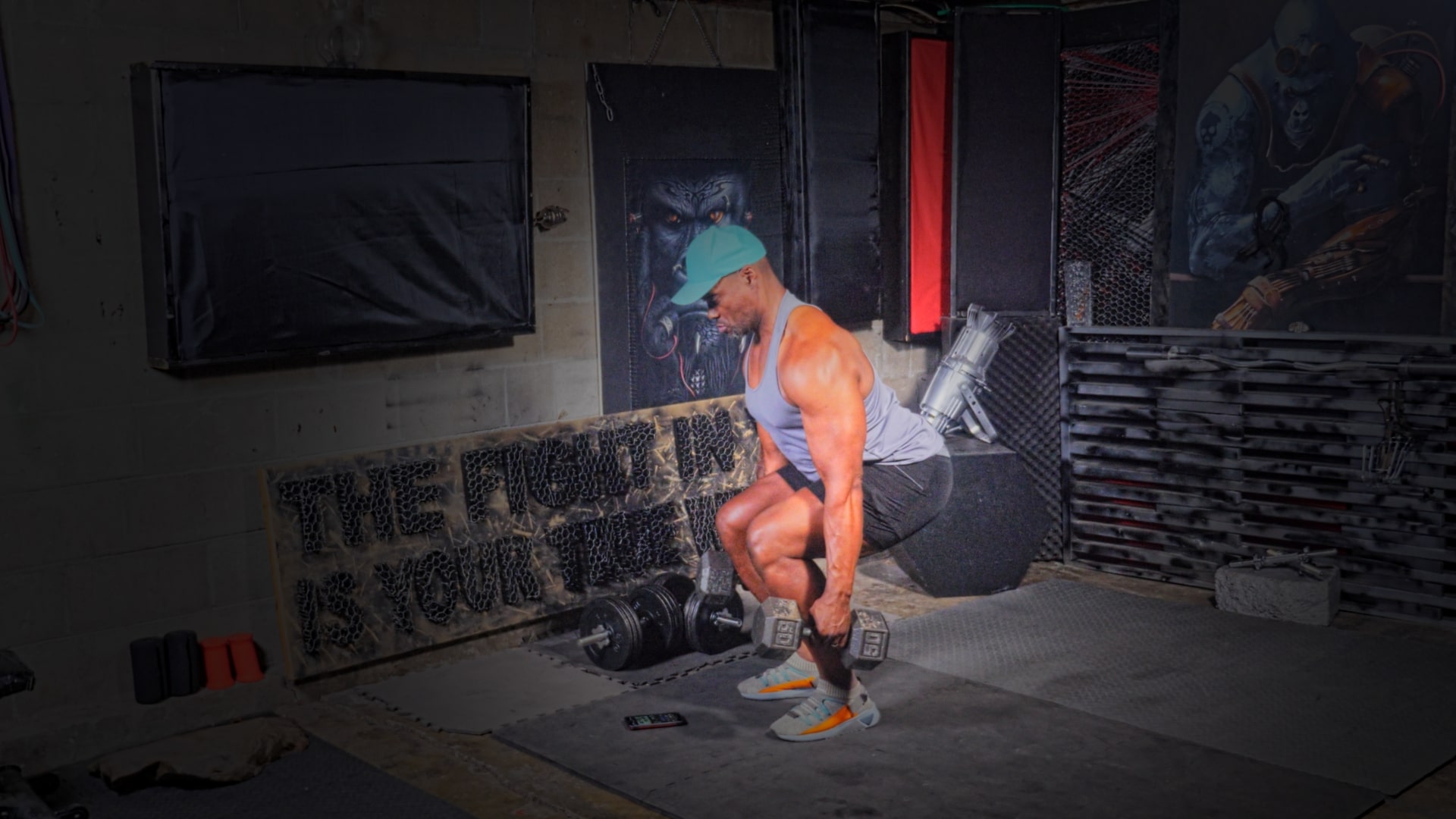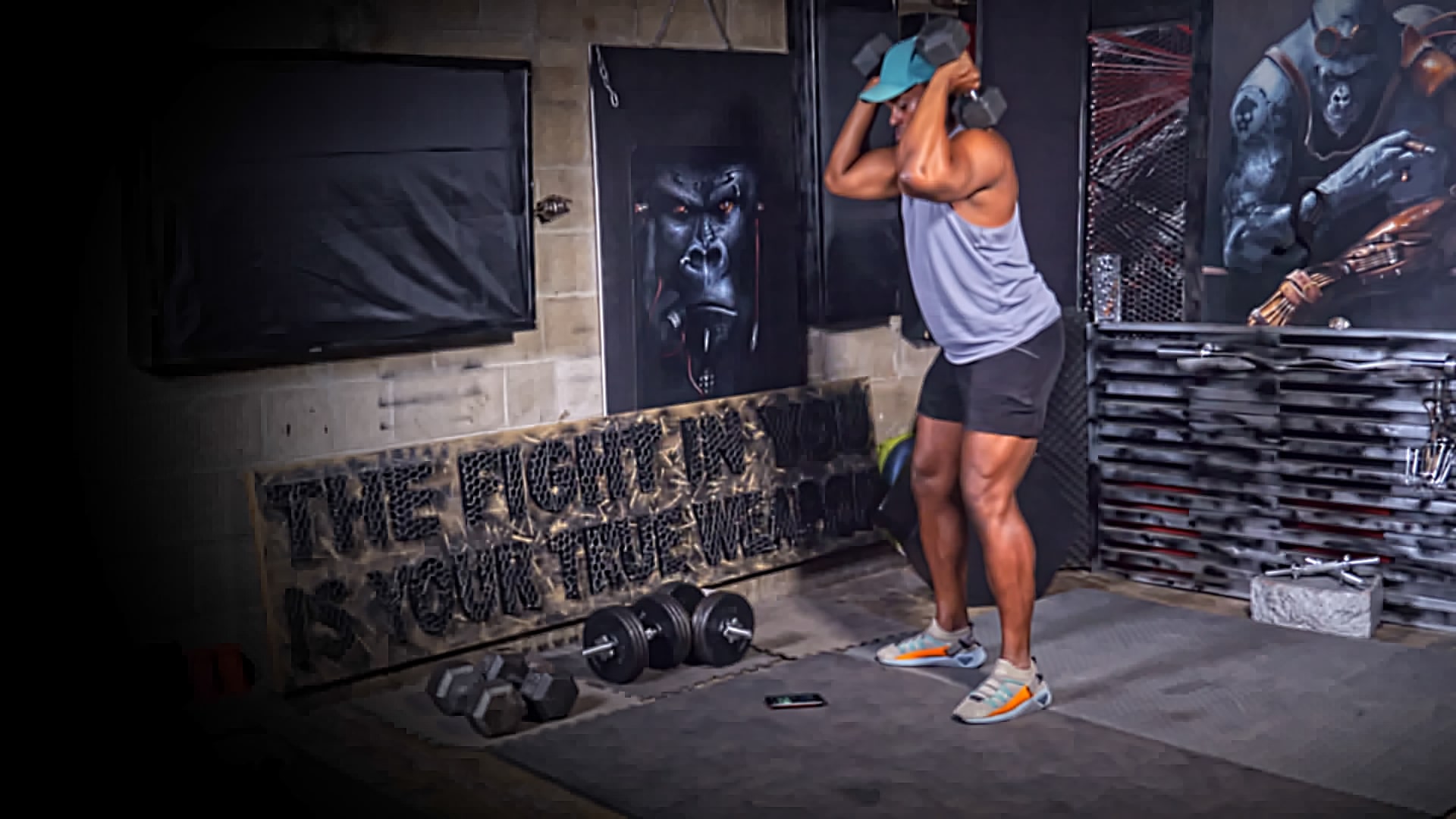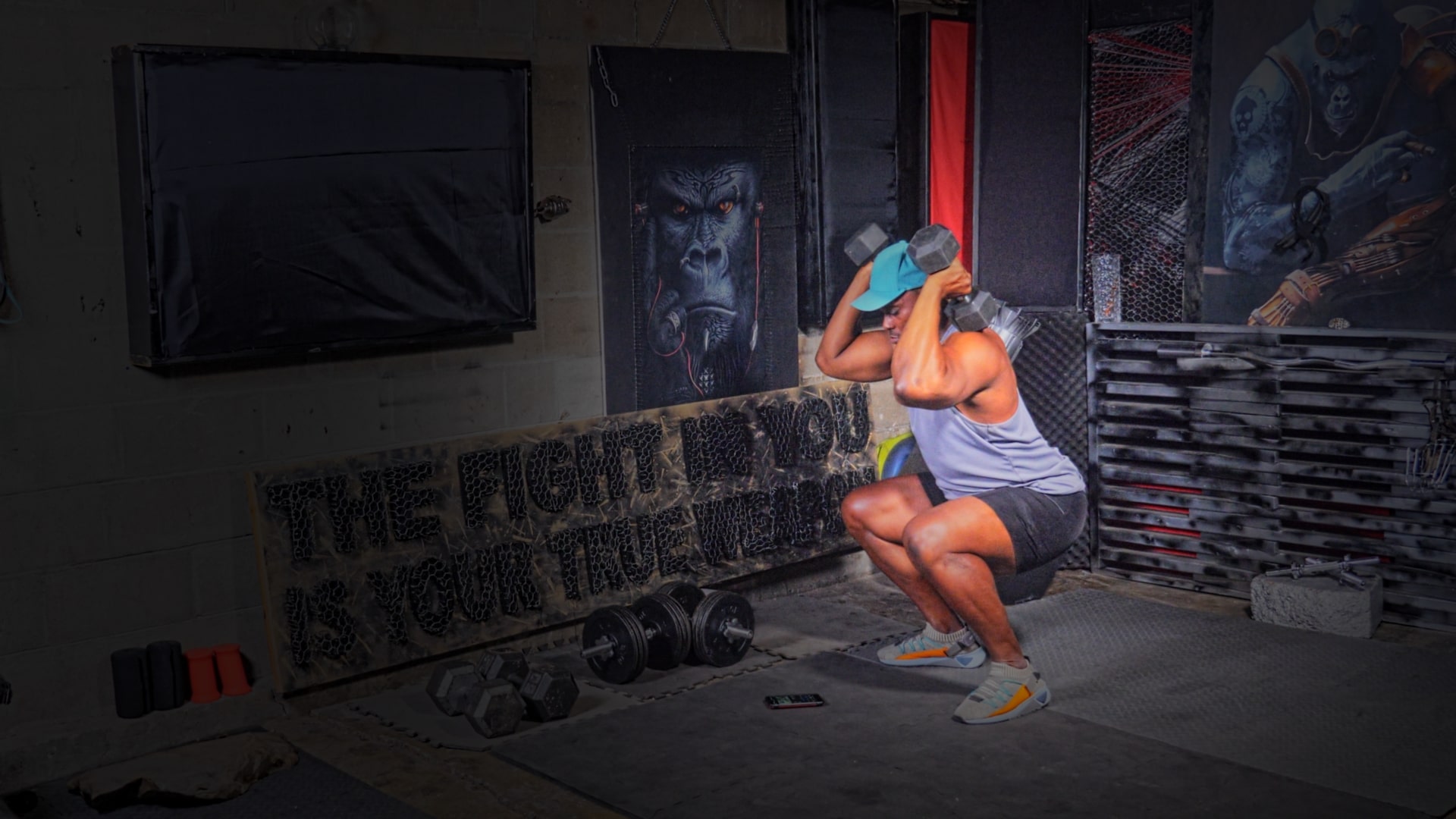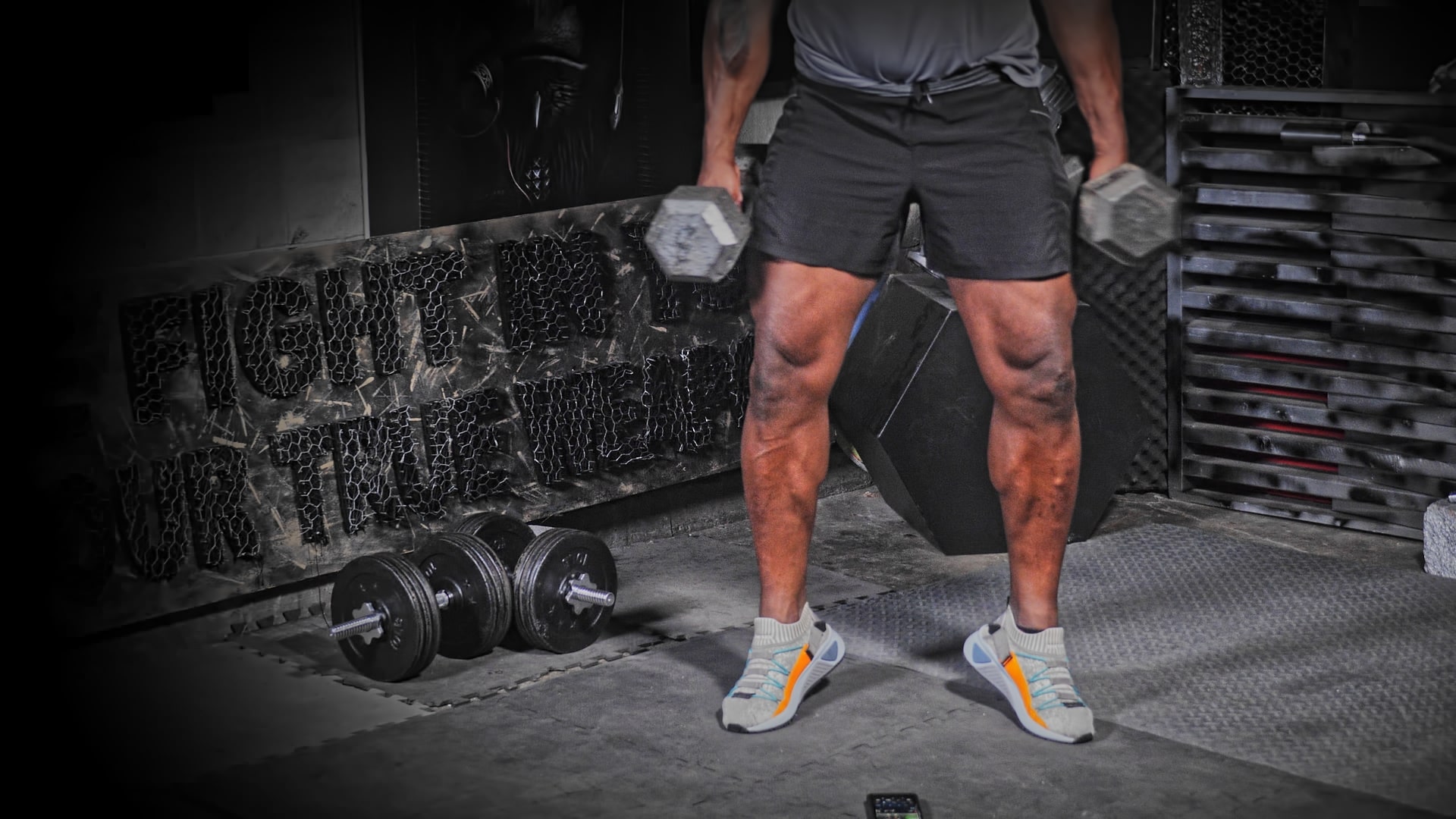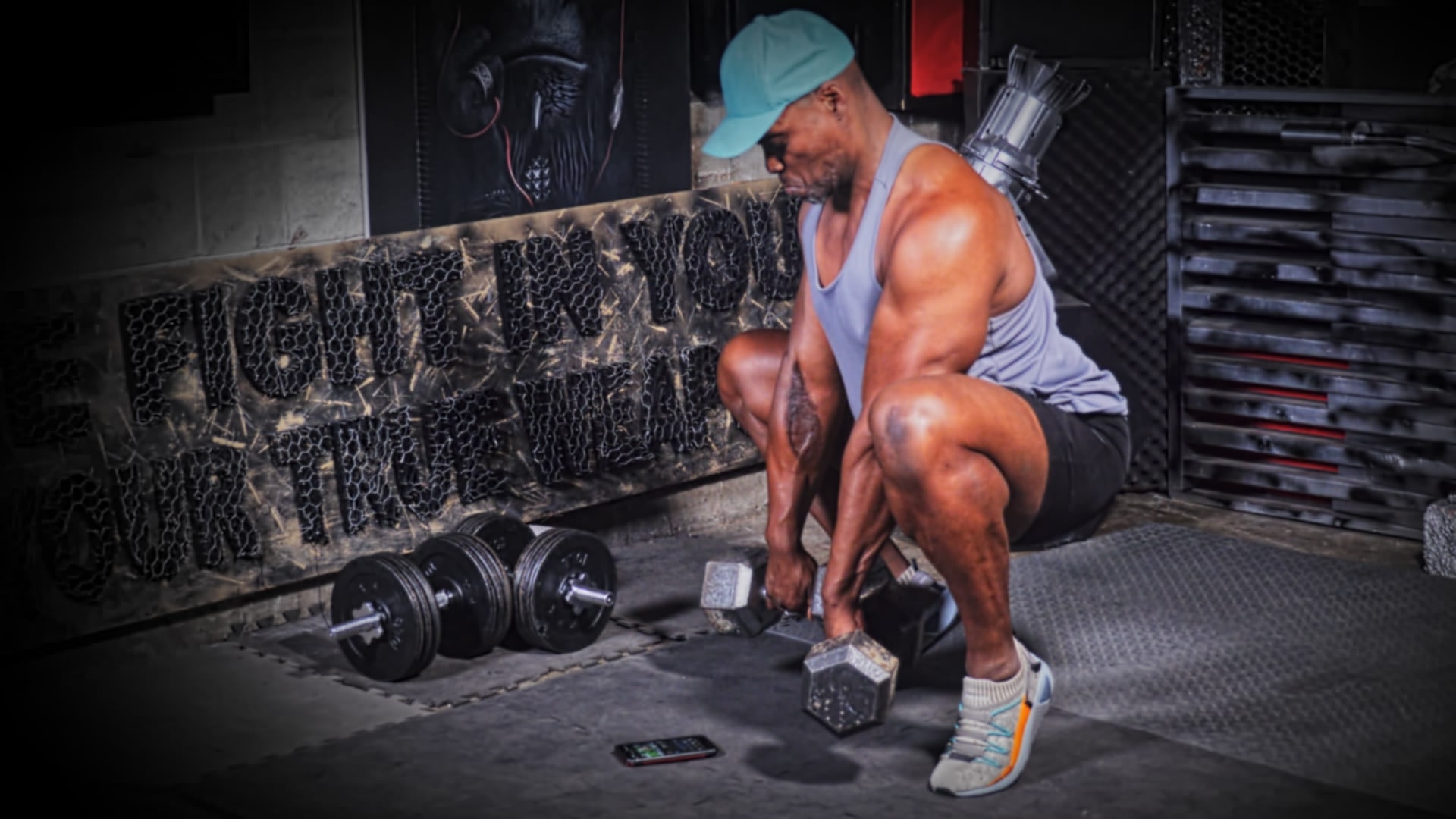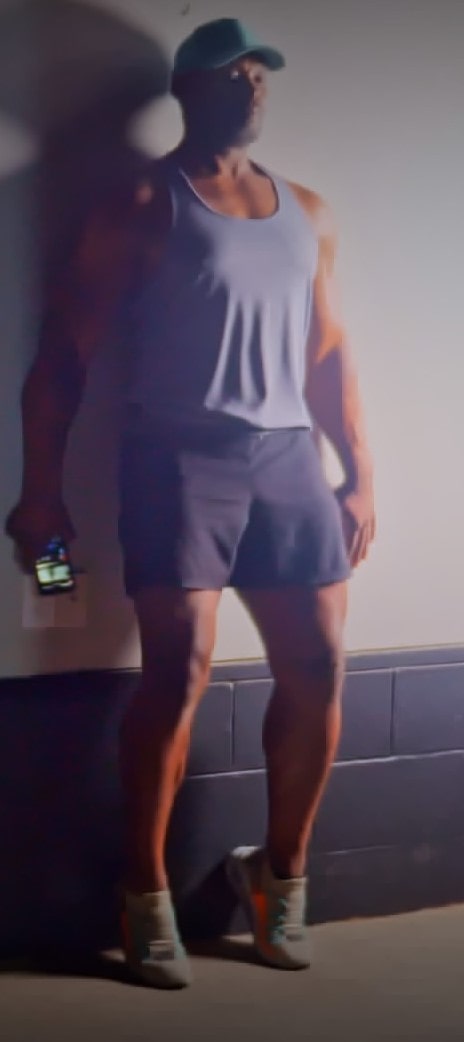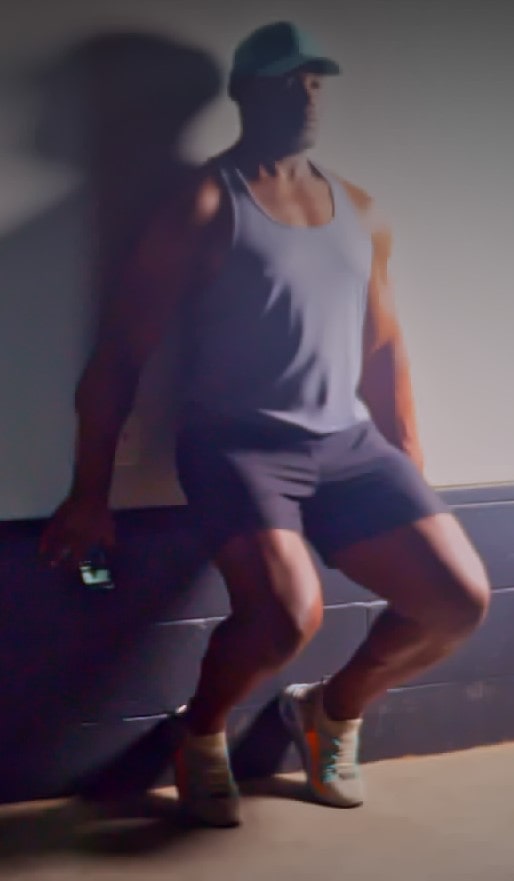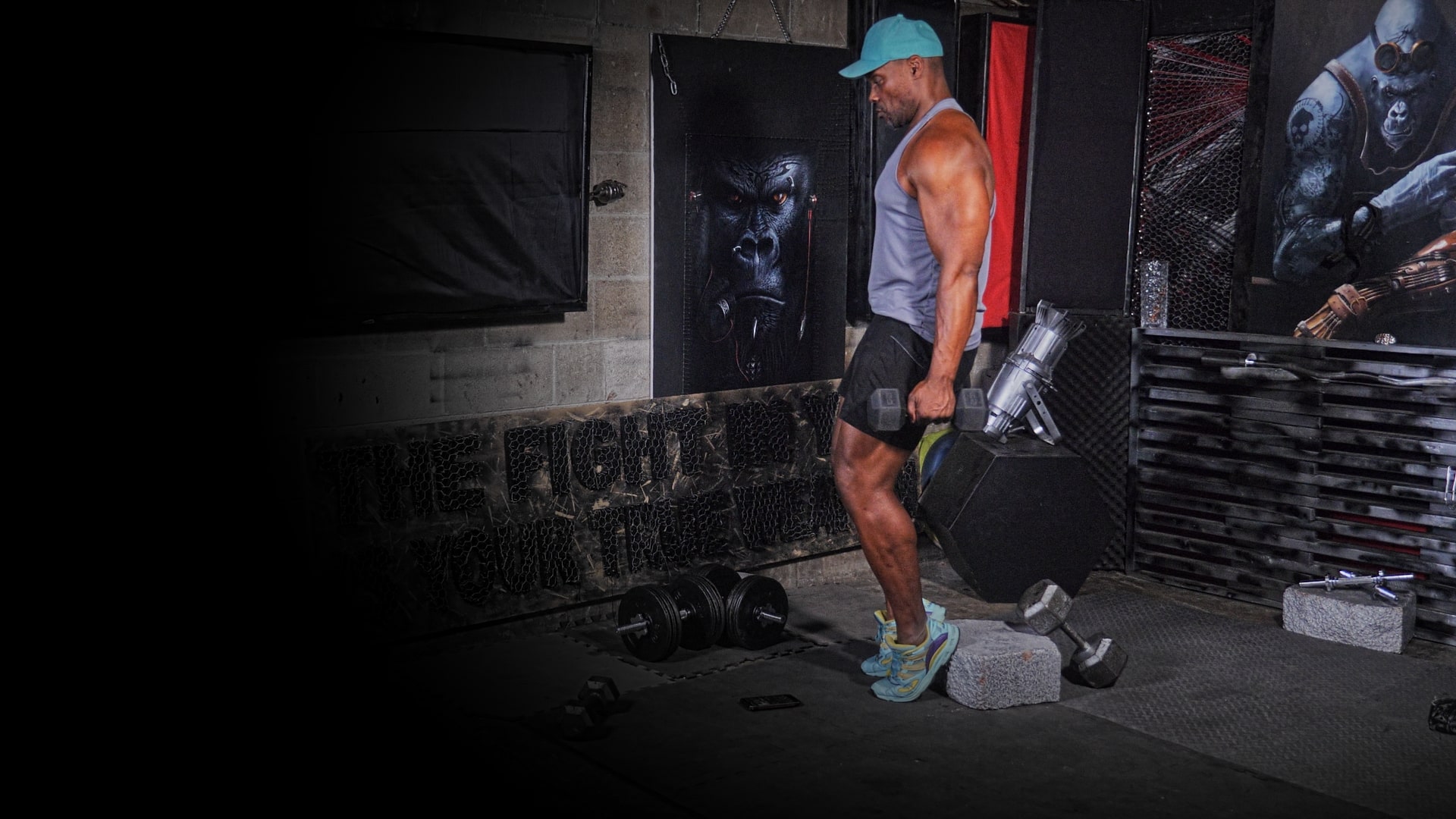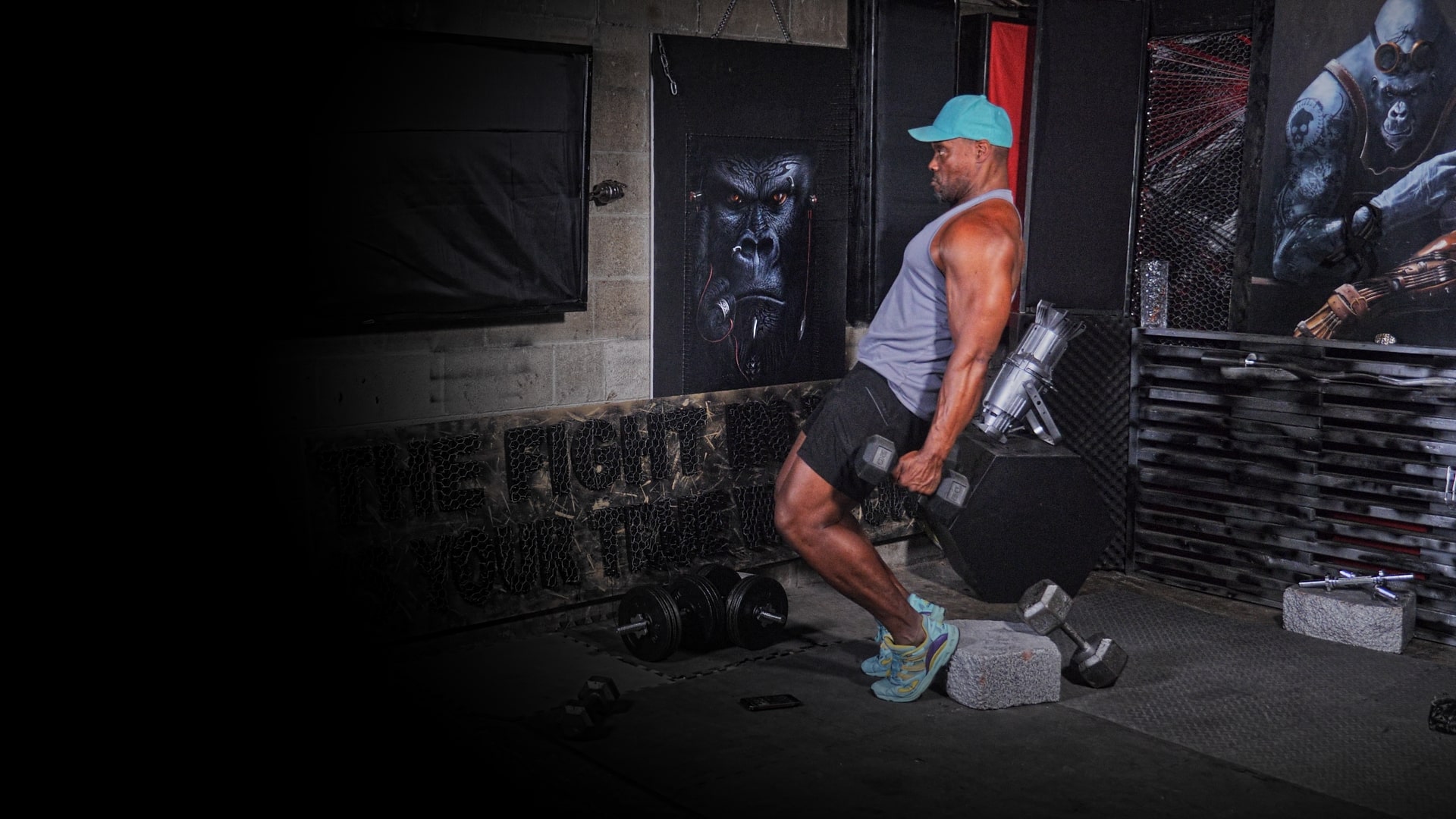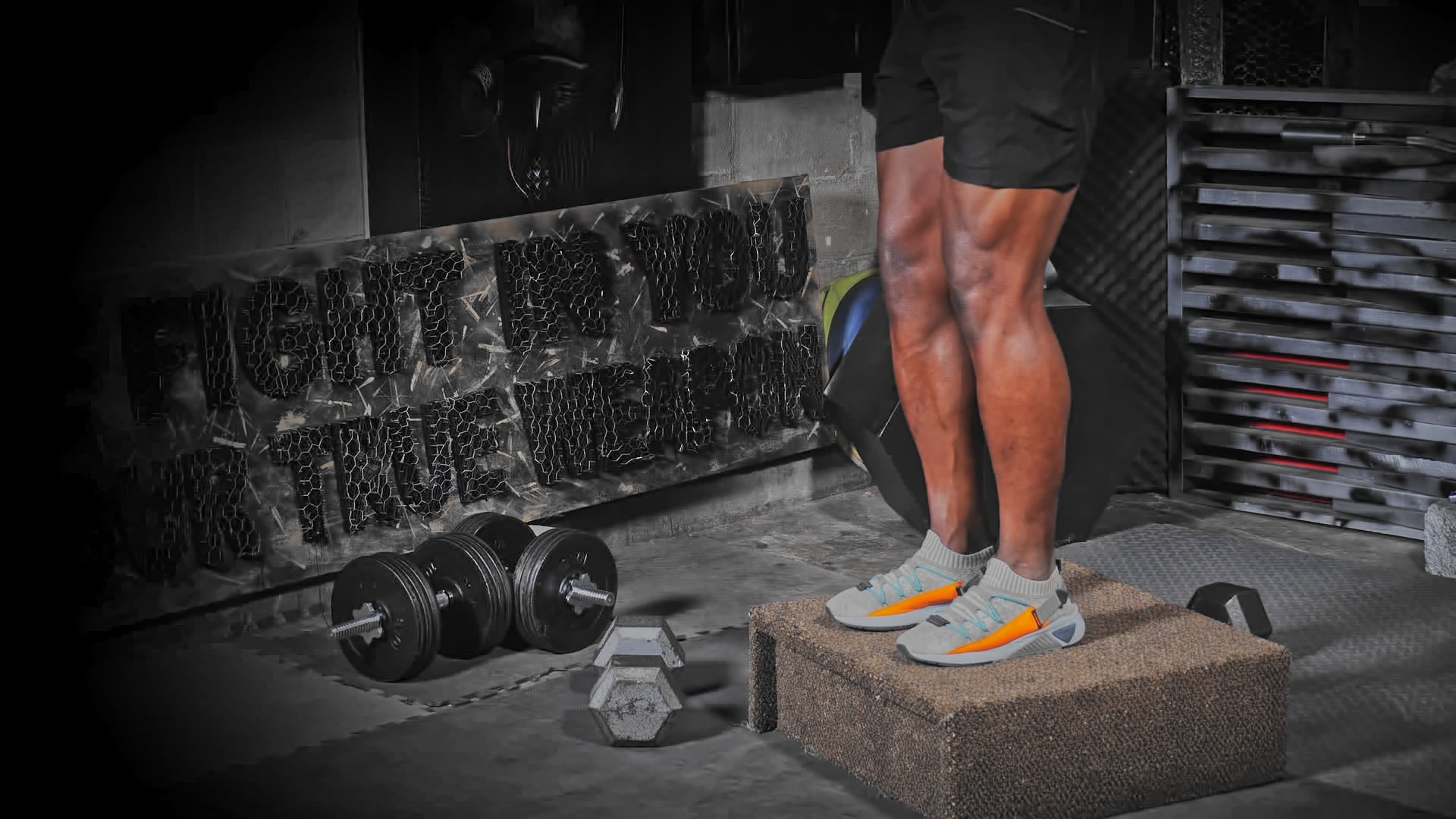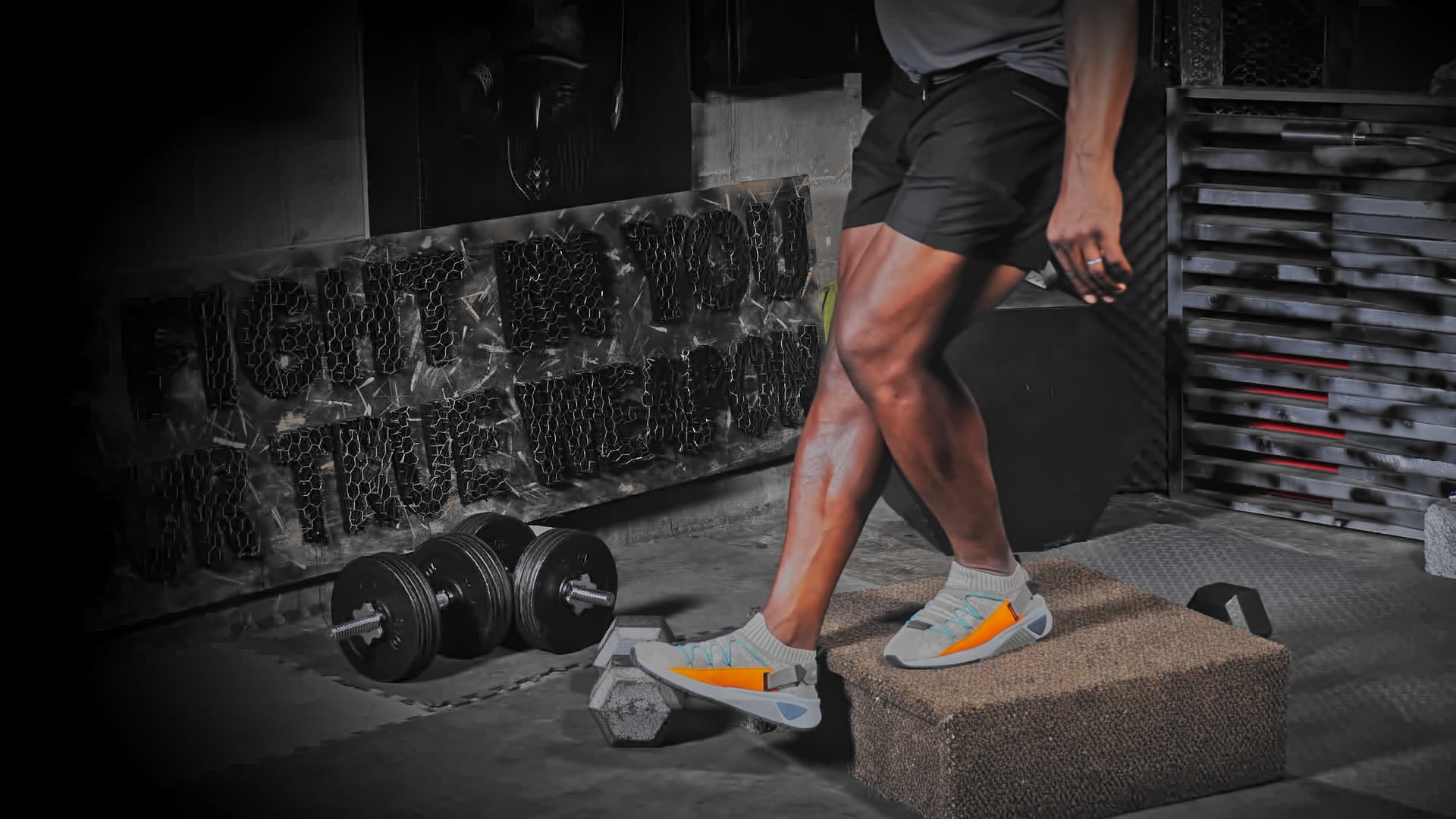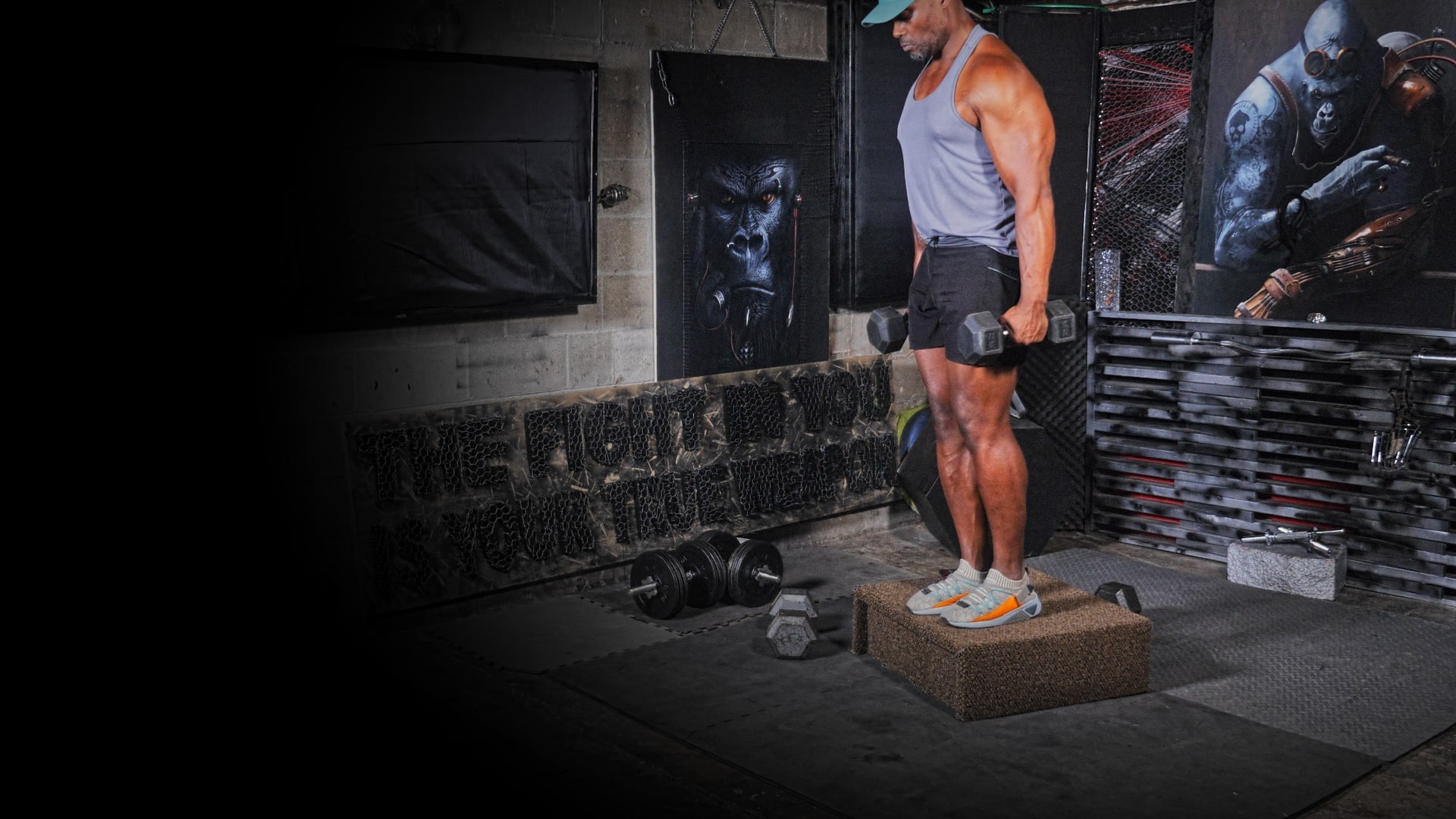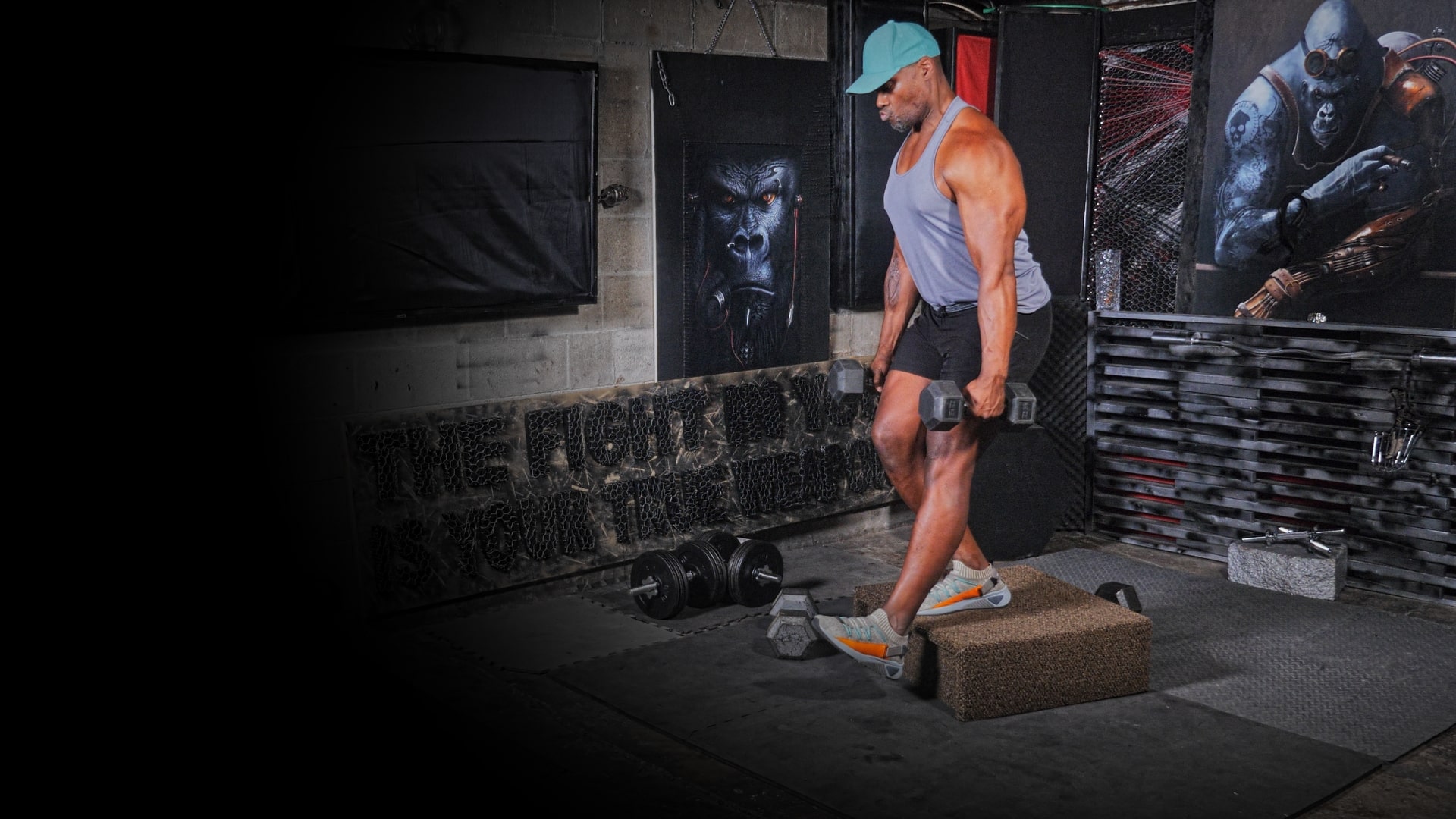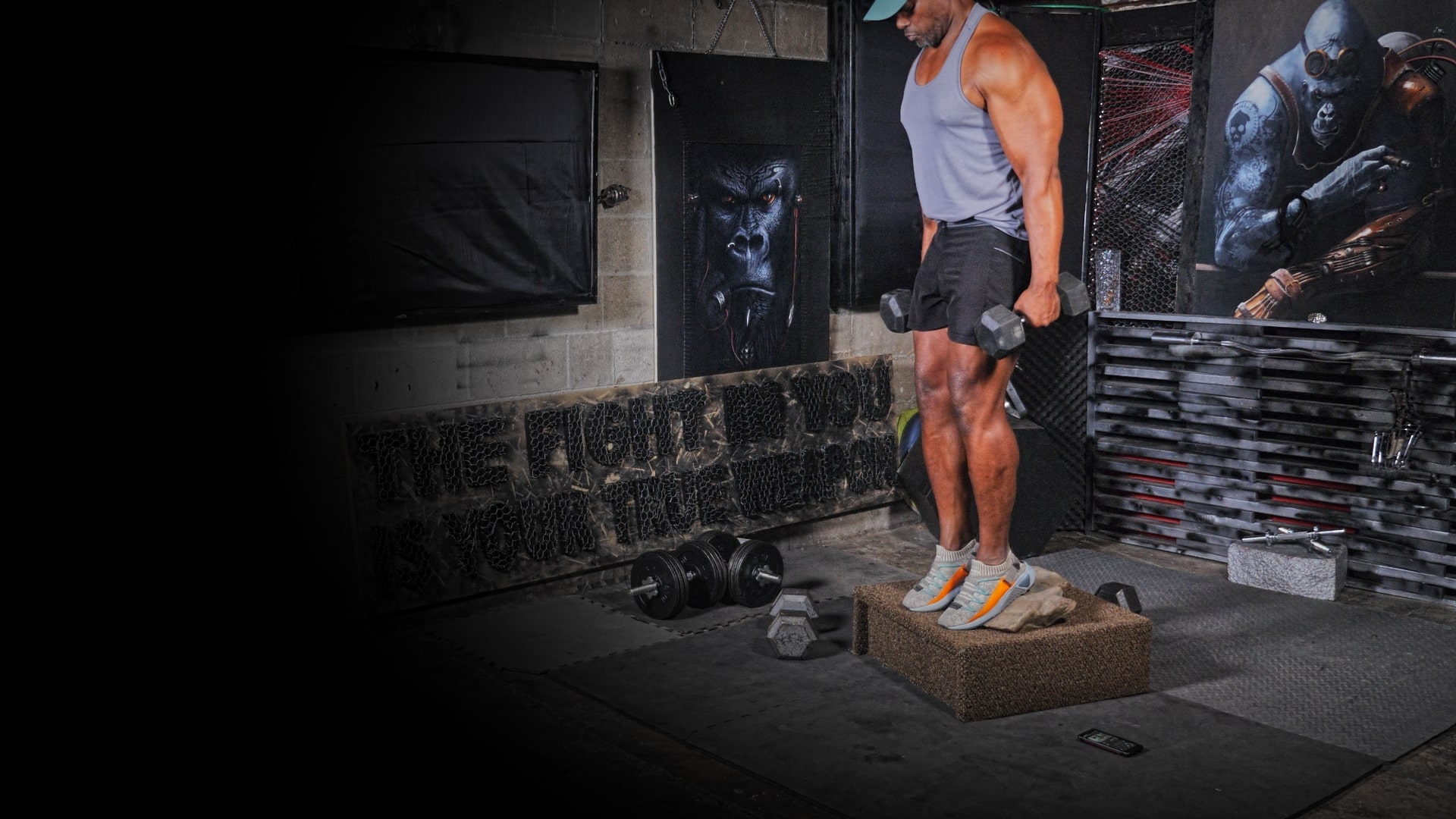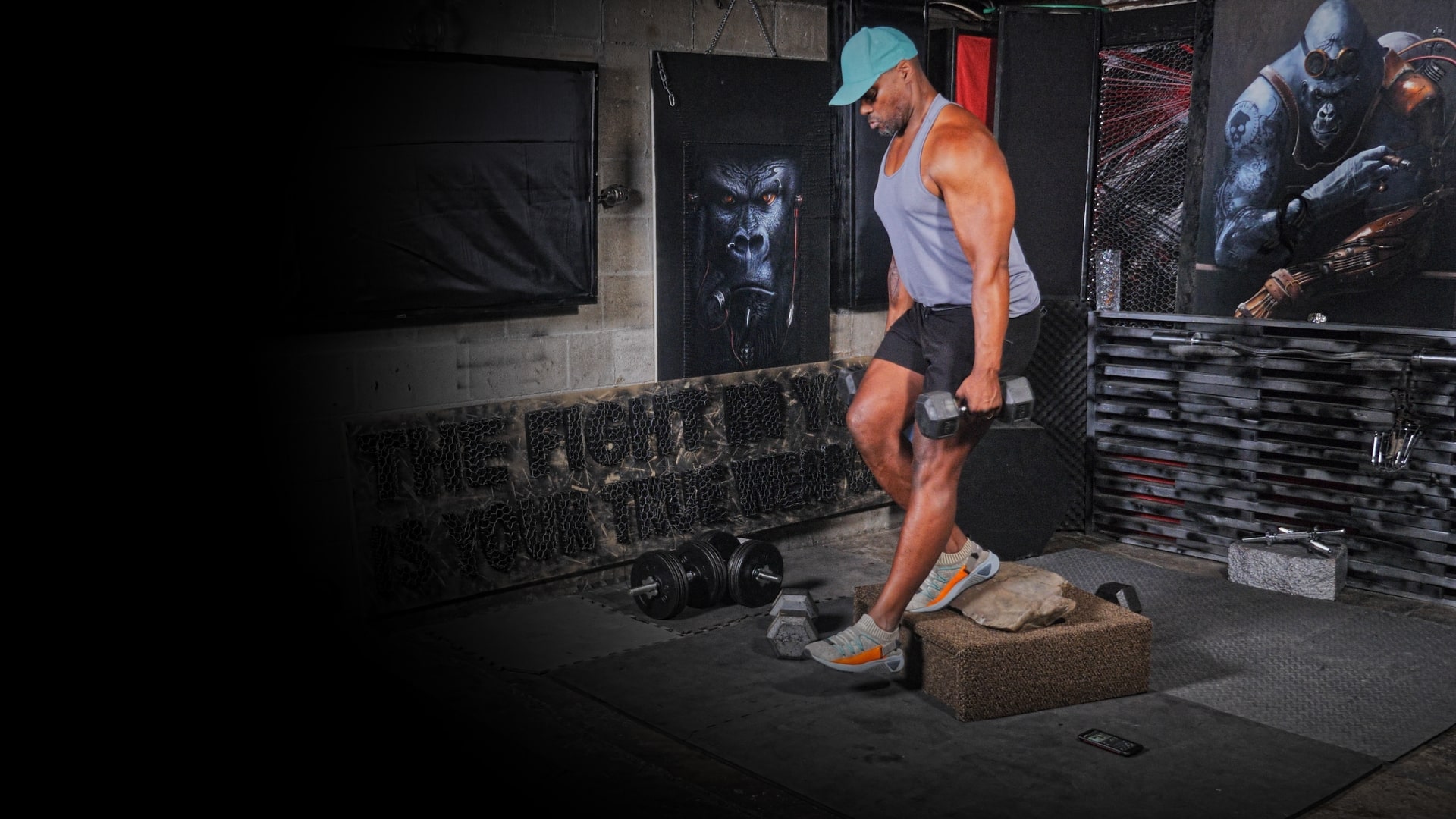Mission Jacked.com
Dumbbell
Squats:
4 Unusual Variations
To Beef Up Your Quads &
Strengthen Your Knees
Introduction:
Dumbbell Squats are one of the best mass and strength builders for lifters who don't have access to barbells and machines. Seen as a compound lower body movement, the Dumbbell Squat is a direct descendant of one of the most iconic exercise movements for building muscle, the Barbell Squat.
I'm Psymon H, creator of Mission Jacked, and the man putting his 40+years of training experience to good use, turning humble bodies into awe-inspiring physiques.
My mission is to help people who only have access to dumbbells and minimal gym equipment take their physique from average to jacked.
In today's lower body dumbbell exercise tutorial, I will show you the correct way of performing Dumbbell Squats. Next, we'll go into the Dumbbell Front Squat and then finish with 3 unique Dumbbell Squat Variations that focus on strengthening the knee, surrounding tendons, and the VMO quad muscle (Vastus Medialis Obliques.)
Scroll To Continue Reading!
Related Articles
Dumbbell RDL + 10 Variations
Dumbbell Clean and Press Your Way To A Stronger and Fitter Physique!
Try This Dumbbell Hamstring Workout For Size
DB RDL
Dumbbell Lunges - Build Muscle In Your Lower Body With These Awesome Variations
Continue Reading This Article
What Muscles Do Dumbbell Squats Work?
The Dumbbell Squat targets the...
Quads
Glutes
Hamstrings
Calves
How to Perform Dumbbell Squats?
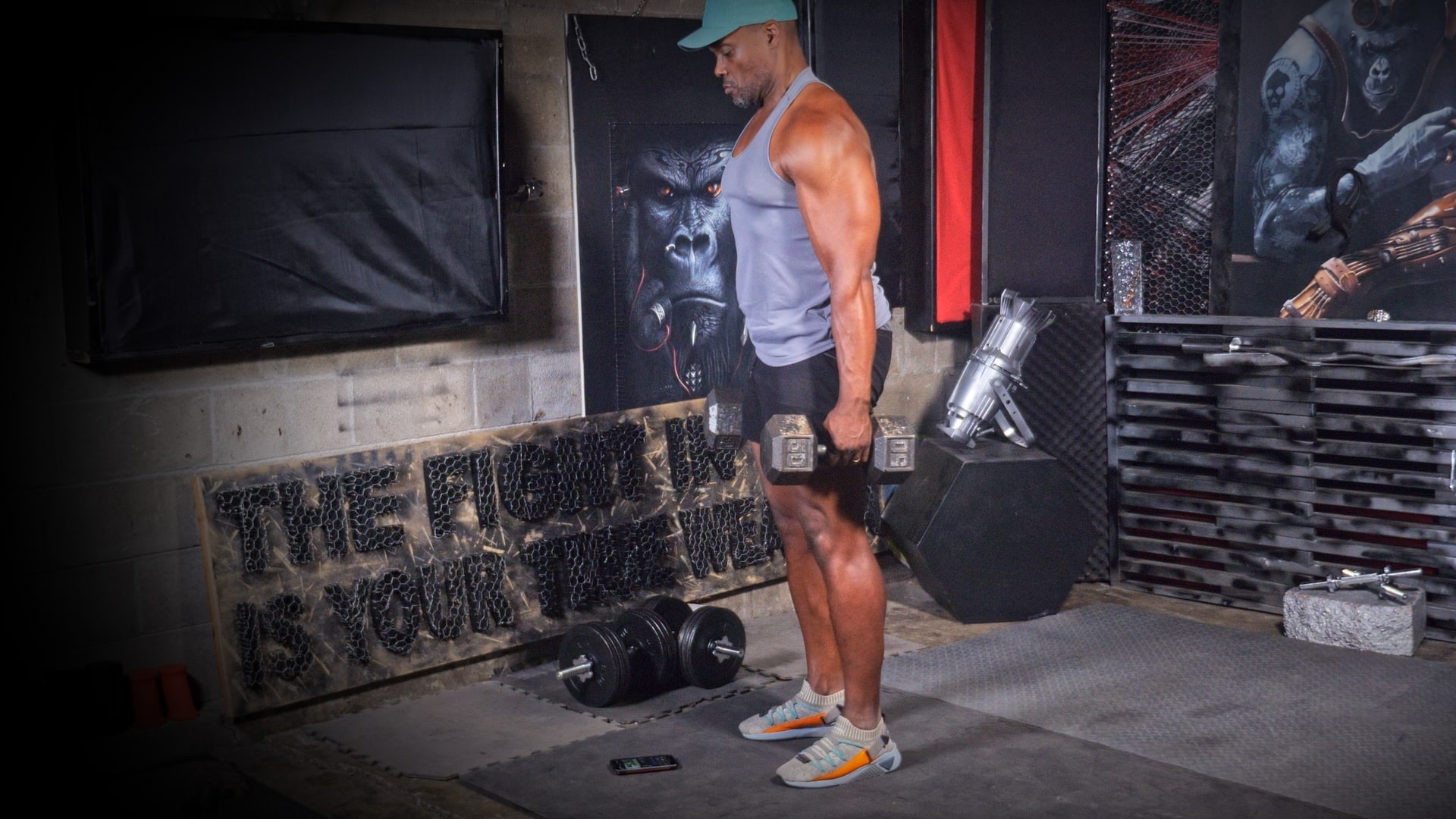 Start Position
Start PositionIf it's the first time you are performing a Dumbbell Squat, start with dumbbells that allow you to complete 2-3 working sets of 8-10 repetitions.
Items Needed: Two dumbbells
Cue 1: Stand with your feet set shoulder-width apart and dumbbells in hand using a neutral grip (palms facing your side.) Distribute your weight through your heels; maintain a flat back, high chest, and an engaged core.
Cue 2: Keep the dumbbells close to you as you maintain a neutral spine. Take a deep breath in and slowly lower your thighs until they are just below parallel. If unsure, you should lower to a level that feels comfortable to you. Focus on making sure your knees don't start to cave in as you lower down.
Cue 3: Pause at the bottom of the movement before pushing your heels into the ground as you begin the upward movement. Maintain a level pelvis during the movement by imagining that it is filled with water and you are attempting not to spill a drop.
Cue 4: As you reach the top, squeeze your glutes and quad muscles. Repeat for the desired amount of repetitions.
Try not to let your knees cave in during the exercise. If you have a problem with your knees collapsing, add a small band below your knees and focus on pulling the band apart.
Dumbbell Front Squats:
If your home gym equipment extends no further than dumbbells, Front Squats with dumbbells are another way to build lower body strength and size. Similar in many ways to basic Dumbbells Squats, one of the differences between the two exercises is where you place the dumbbells during the exercise.
With Dumbbell Front Squats, the dumbbells are in the rack position on or near the front delts. Having the dumbbells in this position transfers more stress away from the Hamstrings and Glutes and places it on the Quads.
Items Needed: One pair of dumbbells
Cue 1: Stand with feet set shoulder-width apart and have the dumbbells by your side.
Cue 2: Safely swing the dumbbells up until they are resting on or close to your front delts. Bring your elbows in until they are tucked into your side.
Cue 3: Keeping the weights in place, maintaining a neutral spine, high chest, and engaged core. Take a breath in and slowly start to lower until you are parallel.
Cue 4: Pause briefly at the bottom of the exercise. Exhale as you push your way to the standing position.
Dumbbell
Squats - Variation 1:
Dumbbell Toe Squats
If you are short on time and want an exercise that effectively works all of the muscles in the lower body, try the Dumbbell Toe Squat for size. The name implies that this exercise takes place on your toes. It works all four muscles of the quads, the glutes, hamstrings, adductors, hips and calves. Not only are you battling the weights in the up and down position, but you are also trying to stay on your toes and keep your balance which further works thy core.
Items Needed: One pair of dumbbells
Cue 1: Have the dumbbells at your side using a neutral grip. Start with your feet slightly wider than shoulder-width apart. Turn your toes out so they are at a 45-degree angle.
Cue 2: Maintain a neutral spine, high chest, and an engaged core. Get up on your toes and take a deep breath.
Cue 3: Take a breath in. Slowly rotate your wrist inwards so that the dumbbells come in together while letting your knees flare out as you lower down until your Hamstrings touch your calves.
Cue 4: Ensure your back remains flat during the exercise. Pause briefly at the bottom of the movement and focus on getting as high as you can on your toes.
Cue 5: Push through the balls of your feet as you drive back to the upright position. Rotate the dumbbells until they are on either side of each thigh at the top of the movement.
db rdls
Dumbbell Squats For Knee Health and VMO Strength:
The
following two Dumbbell Squat variations focus on toe-over-knee squatting to
help develop knee strength while targeting the VMO area of the quads. Science
has proven that it is ok for the knees to go past the toes when squatting. I've
added progressions to both exercises so you can safely work on the form while
building strength.
Dumbbell
Squats: Variation 2:
Wall Sissy Dumbbell Squats
I've never rated the basic Dumbbell Sissy Squat, not because the exercise doesn't work but because it just feels awkward the moment you start adding weight. The Wall Sissy Dumbbell Squat is everything but a sissy. If you want to look after your knees and build strength in the surrounding tendons while zeroing in on the teardrop area, get to know the Wall Sissy Dumbbell Squat.
One of the advantages over the basic Sissy Squat is the use of the wall, especially when you start incorporating this exercise. It helps you to maintain a neutral spine, high chest, and an engaged core.
The Basic Wall Sissy Squat:
Items Needed: A smooth wall to lean on.
So that you can get the exercise right, we're not going to use dumbbells.
Cue 1: Stand with your back flat against the wall. Make sure that the back of your head is also resting on the wall.
Cue 2: Place your feet shoulder-width apart and have your heels on the wall so you are resting on the balls of your feet.
Cue 3: Keeping your back on the wall and your head in place, take a deep breath as you slowly lower, letting your knees travel directly in front of you. Start by only going as low as you feel comfortable. There is no need to go too low.
Cue 4: Pause briefly at the bottom of the movement before exhaling and pushing through the balls of your feet until you are in the standing position.
If your knees are weak, don't rush through to the next progression. Try this twice per week for four weeks. Aim for 8-10 repetitions over 3-4 sets per workout.
Wall Sissy Squat Progression 2:
Once you are used to the basic version, work on going just a little lower and aiming for 12-15 repetitions per set.
Wall Sissy Squats Progression 3:
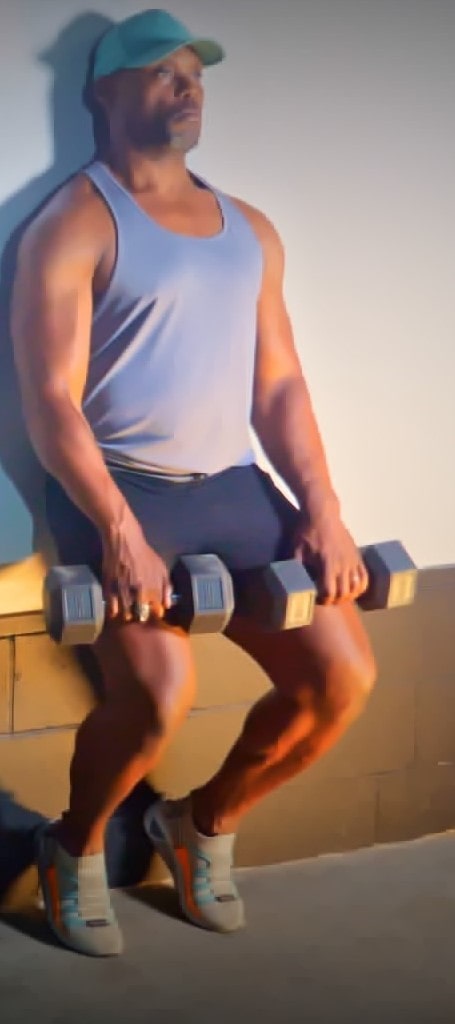
If you are ready to take this exercise to the next level, let's go ahead and add dumbbells. Again, if you are new to this progression, start with light weights, and over a cycle of 4 weeks slowly increase the weights.
Items Needed: One pair of dumbbells and a wall to lean against
Cue 1: Hold a pair of dumbbells in your hands. Stand with your back flat against the wall and rest your dumbbells on your upper thighs. Make sure that the back of your head is also resting on the wall.
Cue 2: Place your feet about shoulder-width apart facing forward and place your heels on the wall so that you are resting on the balls of your feet.
Cue 3: Keeping your back on the wall and your head in place, take a deep breath as you slowly lower, letting your knees travel directly in front of you.
Cue 4: Pause briefly at the bottom of the movement before exhaling and pushing through the balls of your feet until you are in the standing position.
dumbbell rdl
Progression 4: Incline Sissy Dumbbell Squats
Once you've mastered the first 3 sissy squat progressions, try progression 4. The slight angle shift means that this variation will throw more stress on your VMO muscles
Items Needed: A block or platform and one pair of dumbbells. For safety, place a weight at the back of the platform so that it doesn't tip over during the exercise.
Cue 1: Hold a pair of dumbbells at your side and place your heels as close to the top edge of the platform so just your toes are resting on the floor. Turn your feet out to a 45-degree angle so your heels are touching.
Cue 2: Maintain a neutral spine, high chest, and an engaged core.
Cue 3: Take a large breath in. Lean back as you lower down. Only go as low as feels comfortable.
Cue 4: Pause briefly before returning to the start position.
Extra Cue: Pause in the bottom position for 5 seconds on every repetition.
Dumbbell
Squats - Variation 3 -
Step Down Single-Leg Dumbbell Squats
If you're looking for another challenging Dumbbell Squat Variation that will not only strengthen the knees and build up your VMO and tendons but will also test your balance stability, get to know Step Down Single-Leg Dumbbell Squats.
The first thing you will need to do is get used to doing this exercise without weight. By doing this, you will get a good idea of your knee health and strength while perfecting the exercise movement.
Items Needed: A platform
Cue 1: Stand with both feet firmly on the platform with toes a couple of inches away from the front edge.
Cue 2: Maintain a neutral spine, high chest, and engaged core. Start by keeping one foot on the platform and using a slow step-down motion by bringing the other foot down in front of the platform. Stop just before the front heel touches the floor in front of the platform.
Cue 3: Pause for two seconds before returning to the start of the exercise.
Extra Cue: If you struggle with balance, place the platform next to a wall or inside of a power rack and use the post as support.
If you have weak knees, don't rush through to the next progression. Try this twice per week for four weeks. Aim for 8-10 repetitions over 3-4 sets per workout.
Step Down Single-Leg Dumbbell Squats Progression 2:
Are you ready to turn things up a notch? Good!
Time to add dumbbells
Items Needed: A platform and a pair of dumbbells.
Again, if you are new to this progression, start with light weights, and over a cycle of 4 weeks slowly increase the weights.
Cue 1: Stand with both feet firmly on the platform with toes a couple of inches away from the front edge. Hold dumbbells in hand by your side using a neutral grip.
Cue 2: Maintain a neutral spine, high chest, and engaged core. Start by keeping one foot on the platform and using a slow step-down motion by bringing the other foot down in front of the platform. Stop just before the front heel touches the floor in front of the platform.
Cue 3: Pause for two seconds before returning to the start of the exercise.
Step Down Single-Leg Dumbbell Squats Progression 3:
Here comes another Dumbbell Squat variation designed to take your knee and VMO health and strength building to the next level.
Items Needed: One platform, a couple of bumper plates or a small step, and one pair of dumbbells.
The Setup: Place a couple of bumper plates on top of the platform. Ensure that your toes are about a couple of inches away from the edge of the platform when placing your heels on the bumper plates. By elevating your heel, you place more stress on the VMO area of your quads.
Cue 1: Hold dumbbells at your side using a neutral grip. Stand with both heels firmly resting on the bumper plates, with toes a couple of inches away from the front edge of the platform. Hold dumbbells in hand by your side using a neutral grip.
Cue 2: Maintain a neutral spine, high chest, and engaged core. Start by keeping one foot on the platform and using a slow step-down motion by bringing the other foot down in front of the platform. Stop just before the front heel touches the floor in front of the platform.
Cue 3: Pause for two seconds before returning to the start of the exercise.
Thank you For Reading Our Dumbbell Squats Article.
More Articles by Mission Jacked
Split Squat Your Way Through These 6 Variations For Bigger and Better Legs
rdl with dumbbells
How To Lean Bulk
Choosing Urethane and Rubber Dumbbells For Your Home Gym
Shoulder Flys
Prone Row
Mission Jacked L.L.C
Address: 9407 NE Vancouver Mall Dr
STE 104 #1269
Vancouver, WA 98662 USA
Email: mission@missionjacked.com
